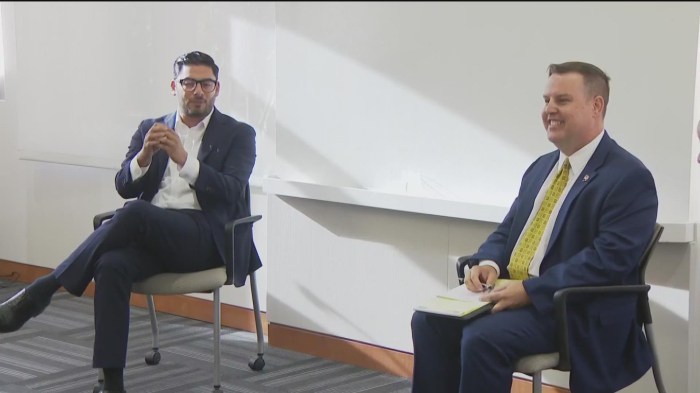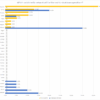Twitter breaking news history is a fascinating journey through the evolution of real-time information dissemination. From its early days as a nascent platform to its current role in major global events, Twitter has dramatically reshaped how we consume and understand breaking news. This exploration delves into the platform’s impact, the challenges it faces, and its potential future role in news delivery.
The early days saw news organizations and individuals embracing Twitter’s unique immediacy, but also grappled with limitations in verification and speed. This early period laid the groundwork for Twitter’s pivotal role in later major events.
Early Days of Twitter Breaking News
Twitter’s early days as a breaking news platform saw a rapid evolution from a social networking tool to a crucial information source. Initially, the platform was primarily used for quick updates and reactions, but as its user base grew, news organizations and individuals began to leverage its real-time nature for disseminating breaking news. This nascent period laid the foundation for Twitter’s future role in the news cycle.The immediacy of Twitter’s updates made it attractive for news dissemination.
Users could share information, photos, and videos rapidly, often outpacing traditional news outlets. News organizations, initially hesitant, gradually adopted the platform, recognizing its potential to reach a wider audience.
Early Adoption by News Organizations
News organizations initially used Twitter for supplementary updates and to interact with their audience. They employed Twitter to post breaking news snippets, live updates during events, and share information not yet verified by other news sources. This often involved a delicate balance between providing quick information and maintaining journalistic integrity.
Notable Breaking News Events on Twitter
Several significant events in the early years of Twitter demonstrated its potential as a breaking news source. For example, the 2010 Haitian earthquake saw Twitter used extensively by those on the ground to report firsthand accounts and request aid. The 2011 Arab Spring uprisings were also heavily reported on Twitter, providing real-time insights into the unfolding events. These examples highlighted Twitter’s ability to connect individuals with news and information during crisis situations.
Technological Limitations and Challenges
The early days of Twitter’s use in breaking news were not without limitations. Verification of information was a major concern, as anyone could post on the platform. Limited character counts and the lack of robust multimedia capabilities sometimes hindered the thoroughness of reporting. Additionally, the rapid pace of information sharing could lead to the spread of misinformation.
Comparison of Early News Reporting Methods with Twitter
| Feature | Traditional News Reporting | Twitter Breaking News |
|---|---|---|
| Speed of dissemination | Slower, reliant on print, broadcast, or wire services | Immediate, real-time updates |
| Reach | Limited to readership of publications and broadcast audiences | Potentially global reach through tweets |
| Verification | Rigorous fact-checking and verification processes | Often reliant on user verification and source reliability |
| Format | Structured articles, reports, or broadcasts | Short, concise updates, often with links to sources |
| Multimedia | Limited multimedia, often static images or short videos | Potentially richer multimedia, including photos, videos, and live-streaming |
The table above highlights the key differences between traditional news reporting and the burgeoning use of Twitter for breaking news. Twitter offered speed and broad reach but lacked the established verification processes of traditional news.
Twitter’s Role in Major Events
Twitter has emerged as a crucial platform for disseminating real-time information during major global events. Its speed and accessibility have made it a vital tool for both official sources and citizen journalists, allowing for rapid updates and perspectives during crises. From natural disasters to political unrest, Twitter’s ability to connect people and share information has often been instrumental in shaping public awareness and response.This rapid information sharing, however, also presents challenges.
The immediacy of Twitter can lead to the spread of misinformation alongside accurate reporting. Consequently, robust verification and authentication methods are essential for ensuring the reliability of the information circulating on the platform.
Twitter’s Role in Natural Disasters
Natural disasters often unfold with a rapid escalation of need and damage. Twitter’s capacity for real-time updates proves invaluable in these situations. Reports from affected areas, rescue efforts, and requests for aid can be disseminated quickly, reaching a wide audience. This allows for swift mobilization of resources and aid efforts. Citizen journalists play a crucial role, providing firsthand accounts and crucial information that often goes unnoticed by traditional media.
Examples of Twitter’s Impact
The 2011 Tōhoku earthquake and tsunami exemplifies Twitter’s role in a natural disaster. People used the platform to share their experiences, locate missing persons, and coordinate rescue efforts. Similarly, during Hurricane Katrina, Twitter provided a lifeline for those stranded and allowed people to connect with family and friends.
Twitter’s Role in Political Unrest
Twitter’s influence in political unrest is equally significant. Protests and demonstrations can be rapidly organized and publicized, allowing for greater public awareness of events unfolding in different locations. This allows citizens to quickly rally support and mobilize against injustices or oppressive actions.
Citizen Journalism’s Role
Citizen journalism plays a vital part in this process. People on the ground, often in situations where traditional media is restricted, can provide crucial details and context. Their firsthand accounts and eyewitness reports are instrumental in shaping the narrative during political unrest. For example, during the Arab Spring, Twitter was instrumental in disseminating information about protests and government responses.
Methods of Authentication and Verification
Twitter employs several methods to combat misinformation during these events. These include fact-checking partnerships, the use of official accounts, and user flagging mechanisms. Official accounts of governments, emergency services, and organizations play a critical role in disseminating verified information.
Contrast of Twitter’s Role in Different Events
| Event Type | Twitter’s Role | Citizen Journalism Role |
|---|---|---|
| Natural Disasters | Facilitates real-time updates, coordination of rescue efforts, and dissemination of aid requests. | Provides firsthand accounts, crucial local information, and often the first reports. |
| Political Unrest | Enables rapid mobilization, dissemination of information about protests and demonstrations, and allows citizens to organize. | Provides eyewitness accounts, contextual information, and reports from areas where traditional media may be restricted. |
Impact of Twitter on News Consumption
Twitter’s emergence as a major news source has profoundly reshaped how people consume information. Its real-time updates and viral nature have challenged traditional news outlets’ dominance, creating a new landscape of information dissemination and reception. The platform’s immediacy and accessibility have fostered a dynamic relationship between news providers and consumers, but also introduced complexities and potential pitfalls.The rapid dissemination of information on Twitter has significantly impacted news consumption habits.
Users now expect instant updates on breaking events, and traditional news outlets are pressured to adapt to this demand for speed and immediacy. This shift has led to a greater reliance on social media for initial information, often before more in-depth reporting is available from established news organizations.
Impact on Traditional News Outlets
Traditional news outlets face the challenge of competing with Twitter’s speed and immediacy. While they still hold value for thorough investigation and in-depth analysis, the initial breaking news often surfaces on Twitter first. This necessitates a rapid response from established news organizations to maintain credibility and relevance. Adapting to this new environment has meant incorporating social media strategies into their workflows, from monitoring trending topics to engaging with their audience directly.
Advantages of Twitter News
Twitter offers several advantages for news consumption. Its real-time nature allows users to stay informed about unfolding events as they occur, offering a unique perspective on happenings globally. The platform also facilitates direct engagement with news sources, enabling users to ask questions and receive immediate feedback. Moreover, the ability to share information widely and rapidly through retweets amplifies news stories, increasing awareness and potentially driving action.
Disadvantages of Twitter News
Despite its advantages, Twitter news consumption presents certain disadvantages. The rapid pace and high volume of information can lead to the spread of misinformation and unsubstantiated claims. The lack of fact-checking and verification processes inherent in Twitter’s format means that users must critically evaluate the information they encounter. The potential for misinterpretations or biased perspectives can also distort the narrative of an event.
Further, the focus on virality over accuracy can lead to a skewed perception of the reality of an event.
Speed and Immediacy Compared to Traditional News
The speed of disseminating news on Twitter is significantly faster than traditional news outlets. Twitter allows breaking news to be instantly shared, often before traditional news organizations can verify or confirm details. This difference in speed has impacted the way people perceive the immediacy of events, creating a sense of urgency and immediacy. Traditional media still maintains the advantage of thorough research and fact-checking, often providing context and analysis missing from initial Twitter updates.
Influencing Perception and Engagement
Twitter’s impact on how people perceive and engage with current events is substantial. The platform’s ability to connect individuals directly with news sources fosters a sense of participation and immediacy. The viral nature of information on Twitter allows for rapid public discourse and discussion on major events, enabling the development of public opinion and facilitating mobilization. However, the platform’s echo chambers and algorithms can contribute to the reinforcement of existing biases and the formation of simplified, polarized views of current events.
Comparison Table: Traditional Media vs. Twitter News
| Feature | Traditional Media | |
|---|---|---|
| Delivery Method | Newspapers, television, radio, online articles | Social media platform, real-time updates |
| Speed | Variable, typically slower for breaking news | Very fast, often instantaneous |
| Verification | Rigorous fact-checking and verification | Limited verification, reliance on user credibility |
| In-depth Analysis | Comprehensive analysis, context, and background | Often limited to initial reports and reactions |
| Audience Engagement | Limited direct engagement with the audience | Direct interaction, feedback, and discussions |
| Potential for Bias | Potential for bias, though editorial processes mitigate it | Higher potential for bias, misinformation, and echo chambers |
Verification and Trust Issues

The rapid dissemination of information on Twitter during breaking news events presents a significant challenge to verifying its accuracy. The platform’s immediacy, while crucial for rapid reporting, also makes it vulnerable to the spread of misinformation and disinformation, potentially impacting public perception and decision-making. This necessitates a critical approach to evaluating information and understanding the various strategies employed to combat these issues.
Challenges of Verification in Breaking News
Verifying information on Twitter during breaking news is difficult due to the speed at which tweets are shared. The rapid nature of the platform often leaves little time for fact-checking or verifying sources. This environment can exacerbate the spread of false or misleading information, which can quickly gain traction and impact public perception. Furthermore, the anonymity afforded by some Twitter accounts can make it challenging to identify and verify the credibility of sources.
Methods to Combat Misinformation and Disinformation
Various methods are used to combat the spread of misinformation and disinformation on Twitter. These include fact-checking initiatives, which scrutinize claims and debunk false information. Twitter itself implements measures such as flagging potentially misleading tweets or removing accounts that repeatedly spread misinformation. Furthermore, news organizations often employ their own verification processes and fact-checking teams to identify and counter false narratives.
Importance of Media Literacy, Twitter breaking news history
Media literacy plays a crucial role in navigating the complexities of Twitter breaking news. Users need to develop critical thinking skills to assess the credibility of sources, identify potential biases, and evaluate the context of information shared. This includes scrutinizing the source of the information, checking for corroboration from other reliable sources, and considering the potential motivations behind the information’s dissemination.
Examples of Misinformation Spread on Twitter
Twitter has been used to spread false information on numerous occasions. During major events, such as political campaigns or natural disasters, false claims about candidates, election results, or the severity of events have been widely circulated. These instances highlight the potential for Twitter to become a platform for misinformation and disinformation. The spread of manipulated or fabricated images and videos also poses a considerable challenge.
Twitter’s been a whirlwind of breaking news since its inception, and now, with the recent announcement that Sony’s Afeela EV is coming to Gran Turismo 7 ( sonys afeela ev is coming to gran turismo 7 ), it’s clear the platform continues to be a rapid source of updates. From major political events to viral trends, Twitter has always been a fast-paced news source, a testament to its ability to deliver information quickly.
Verification Strategies Employed by Twitter and Other News Sources
| Entity | Verification Strategy |
|---|---|
| Flagging potentially misleading tweets, removing accounts with repeated misinformation, and partnering with fact-checking organizations. | |
| News Organizations | Employing their own fact-checking teams, cross-referencing information with other reputable sources, and actively debunking false narratives. They may use fact-checking databases, journalistic integrity guidelines, and other internal protocols. |
| Independent Fact-Checking Organizations | Scrutinizing claims and providing independent assessments of their veracity. They often use established methodologies for fact-checking, such as verifying source material, checking for corroborating evidence, and evaluating the potential motivations behind the information. |
The Future of Twitter Breaking News: Twitter Breaking News History
The evolution of Twitter’s role in disseminating breaking news is a dynamic process, constantly shaped by technological advancements and societal shifts. As the platform continues to adapt, its future in the breaking news landscape hinges on its ability to balance speed with accuracy and credibility. The platform’s future will be significantly influenced by how effectively it addresses challenges like misinformation and the rise of alternative information sources.Twitter’s future trajectory in breaking news will likely involve a greater integration of artificial intelligence (AI).
Twitter’s history with breaking news is fascinating, isn’t it? From the early days of viral updates to the complexities of misinformation, it’s a wild ride. But when you’re looking for a fitness streaming service, Apple Fitness Plus vs Peloton are two major players, each with their own strengths. Ultimately, Twitter’s role in disseminating information, accurate or not, continues to be a key part of how we experience events in real time.
This will be crucial for handling the sheer volume of information and ensuring rapid, reliable verification.
AI in News Verification and Curation
AI tools can analyze the influx of tweets during breaking news events, flagging potentially misleading or inaccurate information. Sophisticated algorithms can cross-reference tweets with established news sources, identify patterns of misinformation, and potentially flag accounts or tweets for review by human moderators. This proactive approach to verification, coupled with automated content curation, could significantly improve the reliability of breaking news on Twitter.
Imagine an AI system that immediately identifies and flags tweets claiming a specific event occurred when, in fact, videos and photos indicate otherwise, reducing the spread of false information.
Evolving Social Media Platforms and Breaking News
The rise of other social media platforms and their unique approaches to news dissemination will impact Twitter’s role. These platforms may offer different strengths in terms of immediacy, verification processes, or community engagement. The future of breaking news likely involves a multifaceted approach, where Twitter retains its real-time edge while integrating strategies from other social media platforms. Instagram, for example, has already become a critical platform for sharing visual content during events.
This signifies the importance of multimodal approaches to news dissemination, which Twitter needs to consider in its future strategies.
Innovative Ways to Enhance Breaking News Reporting
Twitter can enhance breaking news reporting by integrating multimedia features more seamlessly. Live video streaming, enhanced image tagging, and interactive maps could provide richer context to breaking events. Allowing users to annotate and discuss specific details in a video or image would enable a more nuanced understanding of events. This approach could create a collaborative environment, potentially offering more perspectives and insights than traditional news reporting.
Twitter’s early days were all about breaking news, right? Fast-paced updates, live reporting—it was a game-changer. But sometimes, even the best tech can let you down. If you’re looking to squeeze more life out of your LG G4, check out this helpful guide on how get better battery life lg g4. It’s amazing how a little tweaking can make a big difference, and that extends to the fast-moving world of breaking news on Twitter, too!
Another innovative use case could be live-updating information dashboards that consolidate news from various verified sources, providing a comprehensive overview of a developing situation.
Future Trends and Predictions
| Trend | Prediction | Example |
|---|---|---|
| AI-driven verification | Increased reliance on AI to flag and assess the credibility of breaking news | An AI system automatically comparing tweets about a plane crash with witness accounts and official statements to detect potential inaccuracies. |
| Multimodal reporting | Integration of various media formats (text, video, images) to provide a more comprehensive and engaging news experience | Live video streams of a protest overlaid with real-time data about participants, demographics, and police presence, all available within Twitter. |
| Enhanced user engagement | Tools to facilitate direct engagement with verified sources and authoritative figures during a breaking news event. | A Twitter feature enabling users to directly ask questions to a local police spokesperson during a natural disaster, getting real-time updates. |
| Focus on verification | Emphasis on rigorous verification procedures to combat misinformation and ensure accuracy. | Twitter implementing stricter verification requirements for news organizations and experts, including background checks and evidence of journalistic standards. |
Visual Representation of Twitter News History

Twitter’s evolution as a platform for breaking news is a fascinating journey, marked by periods of rapid growth, significant events, and ongoing adaptation. Visual representations are crucial in conveying the complex narrative of Twitter’s role in shaping modern news consumption and the challenges it faces. Infographics and timelines can condense vast amounts of information into easily digestible formats, making it easier to understand historical trends and future possibilities.
Infographic Design: Evolution of Twitter’s Breaking News Function
An infographic depicting the evolution of Twitter’s breaking news function should be a dynamic visual journey. It should start with a simple timeline showcasing early adoption by journalists and the public, then transition into a more complex graphic representing the rise of Twitter as a primary source for immediate updates. The key is to showcase the increasing sophistication of the platform.
- Color Palette: A color-coded timeline is essential. A progressive color scheme (e.g., light blues for early days, transitioning to darker blues and purples for later years) could represent the increasing importance of Twitter in news cycles. Key events could be highlighted with a contrasting color. For example, the launch of Twitter’s verification program could be represented with a dedicated color.
- Font Selection: A clean, readable font is paramount. Varying font weights (bold for headlines, regular for supporting text) could be used to emphasize key information. The font size should be scalable, allowing the infographic to be easily viewed on different devices.
- Imagery: Icons or simple illustrations related to specific historical periods can enhance the visual appeal. For instance, a simple news paper icon for early Twitter usage or a social media icon for the modern era. The use of images should be strategic, not overwhelming.
Data Presentation on Twitter’s Impact on Events
To effectively convey Twitter’s impact on events, a tabular format would be useful. The table could list major events (e.g., natural disasters, political upheavals, significant protests), the date of the event, and the notable role Twitter played in reporting and spreading information. This would demonstrate the platform’s impact on different types of events.
| Event | Date | Twitter’s Role |
|---|---|---|
| 2011 Japan Earthquake and Tsunami | March 11, 2011 | Twitter was a crucial tool for disseminating information about the disaster, helping people connect with loved ones and coordinate rescue efforts. |
| 2017 Hurricane Harvey | August 2017 | Twitter allowed for real-time reporting of the storm’s progress and its impact on communities, enabling quick aid distribution. |
| 2020 US Presidential Election | November 2020 | Twitter became a platform for both reporting and disseminating information about the election, although the platform faced criticism regarding misinformation. |
Historical Timeline of Twitter Events
A detailed timeline of Twitter events can help contextualize the evolution of breaking news on the platform. This timeline should include specific dates, key features launched, and significant events that affected how Twitter handled breaking news. The visual presentation should be clear and easy to navigate.
- Chronological Order: The timeline should follow a strict chronological order, from the platform’s inception to the present. This allows for a clear progression of how the platform’s capabilities changed over time.
- Visual Markers: Key events (like the launch of a new feature or a major incident) should be marked with visual cues (e.g., a distinct shape or color).
- Concise Descriptions: Each event should be accompanied by a concise description of its significance in the context of breaking news. Avoid overly technical jargon.
Conclusive Thoughts
In conclusion, Twitter’s history of breaking news is a complex interplay of innovation, challenges, and evolving user behavior. From its humble beginnings to its current role in global events, Twitter’s influence on news consumption is undeniable. The future of Twitter breaking news hinges on its ability to balance speed with accuracy and combat misinformation, a challenge that will undoubtedly shape the platform’s role in future news cycles.






